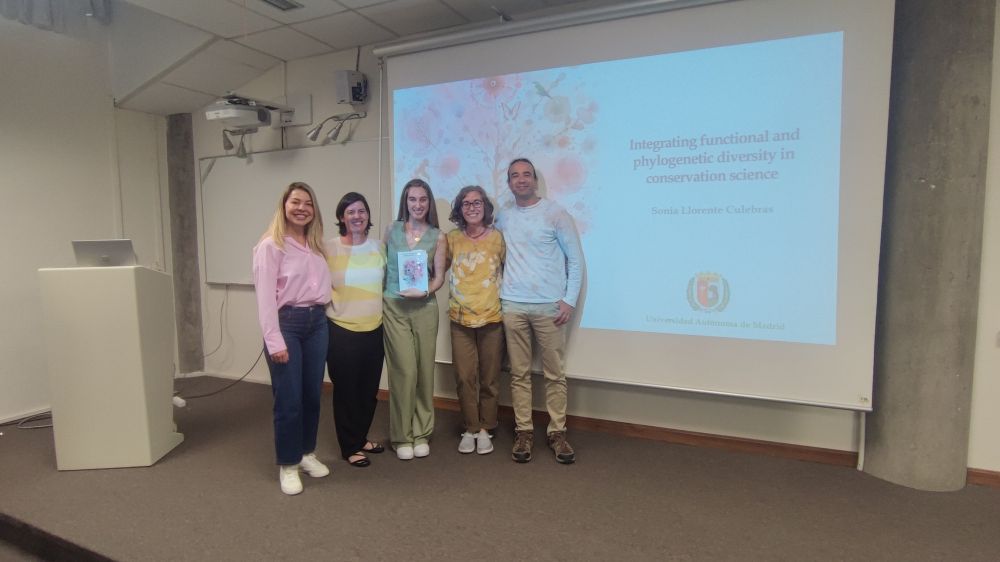Quantitative ecologist, conservation & population dynamics. EcCo lab PI. Assoc Prof at Uni. of Reading, UK. She/her.
https://sites.google.com/site/manuelagonzalezsuarez/Home

Xanthos is geographically restricted, looks & behaves differently, even if apparently "the same" genetically as the most widely distributed sea snake, we owe to protect this Golfo Dulce endemic sea snake
We could lose biodiversity if we just focus on genes

Currently H. platurus xanthos is listed as Endangered by the IUCN Red List www.iucnredlist.org/es/species/2...
Yet, genetically could be clustered with H. platurus, listed as Least Concern
Should we still protect Xanthos 🐍?
👇
What is happening?
We do not know but divergence may be too recent to show a genetic signal, differences may occur in very few genes not detected in our SNPs analyses, differences could be epigenetic...
👇

It is geographically isolated in Costa Rica and behaves differently from its relative the yellow-bellied sea 🐍 Hydrophis platurus platurus
👇
One new paper led by @brookebiologist.bsky.social gives us food for thought 🌎🧪
Morphology, ecology and behaviour of the Golfo Dulce yellow sea 🐍 tell us one story...
genetics 🧬 tell us another
doi.org/10.1093/zool...
👇
@cpcarmona.bsky.social @josephtobias.bsky.social
@expecocons.bsky.social
& Chris Venditti
It was great to work with you all!
Reposted by Joseph A. Tobias, Carlos P. Carmona


Congratulations, Dr. Stewart!!
The EcCo lab will miss you, but we know you are off to do amazing things
Thanks to the excellent examiners @alexpigot.bsky.social & @vlboult.bsky.social
Reposted by Wolfgang Kiessling, Craig R. McClain, Manuela González‐Suárez

The Marine Organismal Body Size ( #MOBS ) Database is now live—85,000+ marine species, from plankton to whales, with standardized size data.
A huge leap for biodiversity, conservation, and climate science. #science #marinelife onlinelibrary.wiley.com/doi/10.1111/...
Reposted by Carlos P. Carmona
"Threat reduction must be coupled with targeted recovery programmes to conserve global bird diversity" www.nature.com/articles/s41....
Great working with @mgs-cielo-azul.bsky.social, @josephtobias.bsky.social, @cpcarmona.bsky.social, @expecocons.bsky.social, Chris Venditti and Jo Baker.

Reposted by Joseph A. Tobias, Carlos P. Carmona, Manuela González‐Suárez

"Threat reduction must be coupled with targeted recovery programmes to conserve global bird diversity" www.nature.com/articles/s41....
Great working with @mgs-cielo-azul.bsky.social, @josephtobias.bsky.social, @cpcarmona.bsky.social, @expecocons.bsky.social, Chris Venditti and Jo Baker.
Reposted by Jaanus Suurväli

The rule is simple: in every region on Earth, most species cluster together in small 'hotspot' areas, then gradually spread outward with fewer and fewer species able to survive farther away from these hotspots.
Thanks to @mgs-cielo-azul.bsky.social @fmazcarate.bsky.social & Fernanda Alves Martins fir being part of the committee, and for the great discussion you raised!
#proudsupervisor

Also a return to my first academic institution, I finished my studies in UAM in June 2000, leaving to start an adventure in graduate school in the USA.
Reposted by Manuela González‐Suárez

Thanks to @mgs-cielo-azul.bsky.social @fmazcarate.bsky.social & Fernanda Alves Martins fir being part of the committee, and for the great discussion you raised!
#proudsupervisor

Lecturer in Invertebrate Zoology
jobs.reading.ac.uk/Job/JobDetai...

Lecturer in Field Ecology
jobs.reading.ac.uk/Job/JobDetai...

